Pride, the poetry of Michelangelo and the love that dare not speak its name
Over centuries, LGBT+ history in the arts has been hidden. Kevin Childs looks at the stories erased by language, historians, book burnings or, worse, by silence

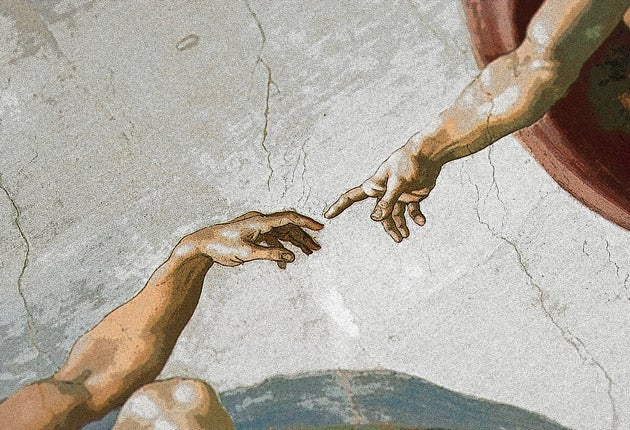
Someone discovered a scrap of verse recently by the First World War poet Siegfried Sassoon, sent in a letter in 1925 to a young man he’d fallen in love with, the actor and later director, Glen Byam Shaw. On the face of it, and like much of Sassoon’s love poetry, the context is what gives the poem meaning.
Though you have left me, I’m not yet alone:
For what you were befriends the firelit room;
And what you said remains and is my own
To make a living gladness of my gloom
The firelight leaps and shows your empty chair
And all our harmonies of speech are stilled:
But you are with me in the voiceless air
My hands are empty, but my heart is filled.
It’s a small thing, just a few lines, and although there’s nothing in the words he uses which suggests his new love is a man, there’s a vague sense of it. The great game of sexuality then was a necessary precaution when same-sex desire for men was a matter of criminal sanction and, arguably, even the publication of an overtly gay love poem could land everyone involved in the dock. But in 1925 Sassoon, it seems, couldn’t help himself. Sitting by the fire one night in October, having spent the previous evening with Byam Shaw, everything reminds him of the young man’s absence, and he’s compelled to write. It’s taut and sexually charged, yet the lines have a warmth about them – a tenderness. Sassoon is not troubled or desperate, just brim full of love.
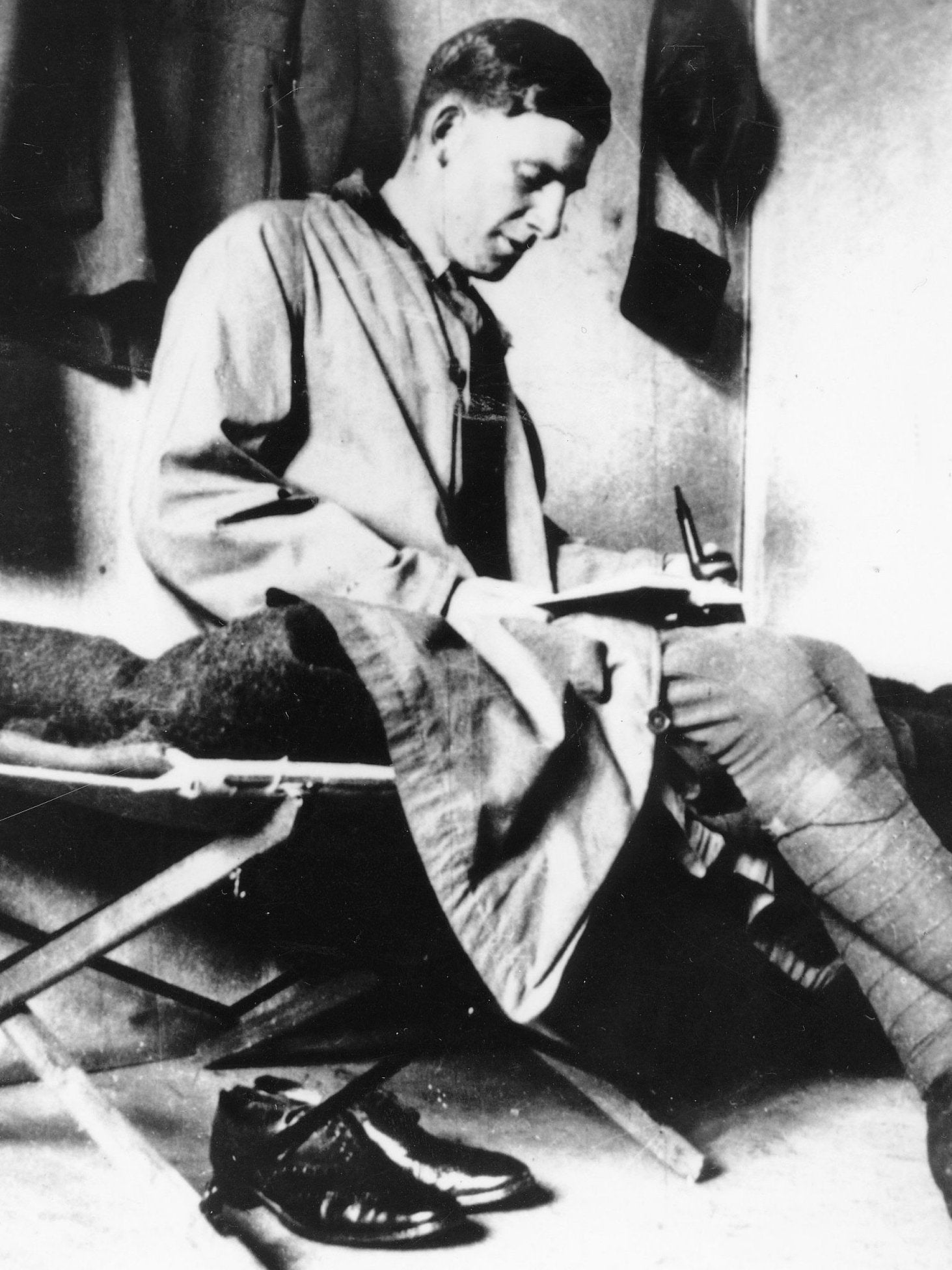
It’s easy to disguise gay love in poetry, if you wish. Even the infamous poem by Oscar Wilde’s lover Alfred Douglas, which contained the line “I am the love that dare not speak its name”, had to be explained to the jury during Wilde’s trial for gross indecency in 1895 because it made no specific reference to same-sex love. Only occasionally had a great poet let the world in on his love – Walt Whitman extensively, for example, Lord Byron once in an unguarded moment to a fellow Greek revolutionary, Omar Khayyam at the bottom of a cup of wine.
During centuries of oppression, few English-speaking writers dared to be so proud. Most hid behind a veil of linguistic ambiguity or, like Emily Dickinson, simply hid. Oscar Wilde shrouded his homosexuality in symbolism until the law made a nonsense of it. Glances are exchanged in AE Housman’s A Shropshire Lad. EM Forster’s explicitly gay novel Maurice didn’t see the light of day until its author’s death in 1970.
Women were braver, with Vita Sackville West and Radclyffe Hall living the life and writing about it, and Virginia Woolf daring to express an opinion on sexuality and gender in her famous “love letter” to Sackville-West, Orlando. Sassoon himself emerged from the war determined to write a gay Madame Bovary, a sort of “invert’s” manifesto, although time and society’s hostility ensured it was never written. Even the love poetry of a poet as out as WH Auden is gender-neutral and so can pass in a heterosexual world.
LGBT+ stories have been hidden for so long. They’ve been adapted and erased by language, by historians, by editors, by book burnings and most tellingly by ambiguity or worse, silence: it’s still possible to read a biographical account of a writer like Wilfred Owen, the greatest of the war poets, who was killed days before the Armistice in 1918, which fails to mention his sexuality and the explicit love he expressed in his poetry for other young men. We have been the stooges of compliant historians and critics, who still try to tell us this wasn’t so and that was just a convention of the time and meant nothing. Owen’s sexuality was airbrushed out, despite lines of verse such as this:
Tonight, shall thy mouth’s petals give their bloom
To soiled pillows in tattered room
And shall they touch thy fingers, who not feel,
Nor see, nor care for beauty: whom thy heel
Could crush if I might tell thee how (Wilfred Owen, “Lines to a Beauty Seen in Limehouse”)
This is why we need Pride: not just to show how we have overcome all those centuries of subterfuge and deceit, but because of those who tried to break out, to sing of their love for the woman beside them, the lad who came to tea, the golden youth whose every gesture – running his figures through his hair, smiling in the sun, pressing his thigh against yours – burnt through them. It’s their pride we celebrate too, even if they couldn’t.
Perhaps the most pernicious example of straight-washing, not only of a poet’s work but their entire life, is Michelangelo Buonarroti, the great painter of the Sistine Chapel, sculptor of David and architect of Saint Peter’s. Michelangelo is so much less known for his poetry than he is as a sculptor or painter, but he wrote remarkable sonnets and madrigals throughout his life.
In the early 1530s he began composing poems to a young Roman nobleman, Tommaso dei Cavalieri. These are powerful, searing, sublimely beautiful verses in which the poet bled burning drops of passion on to the page to explore and express his feelings: the disorientating effect of loving someone so entirely; the devastation of rejection; the sheer terror and elation of an older man falling in love with a younger and, by all accounts, extraordinarily beautiful man.
I see in your fair face, my lord,
What in this life words fail to tell;
My soul, still clothed in fleshly shell
Yet rises with it heavenward.
But some years after his death, when most of his verse was known only through one or two manuscript copies, his great-nephew, also called Michelangelo, decided to publish a volume of it, stripping it of any reference to same-sex desire. The authenticity of Michelangelo’s voice, and the deep feeling it contained, its very outness, was too much for a later age. The poetry and the man were effectively castrated, the verse smoothed into heterosexual blandness and Michelangelo turned into a celibate monk-like character with no sexual life or drive at all.
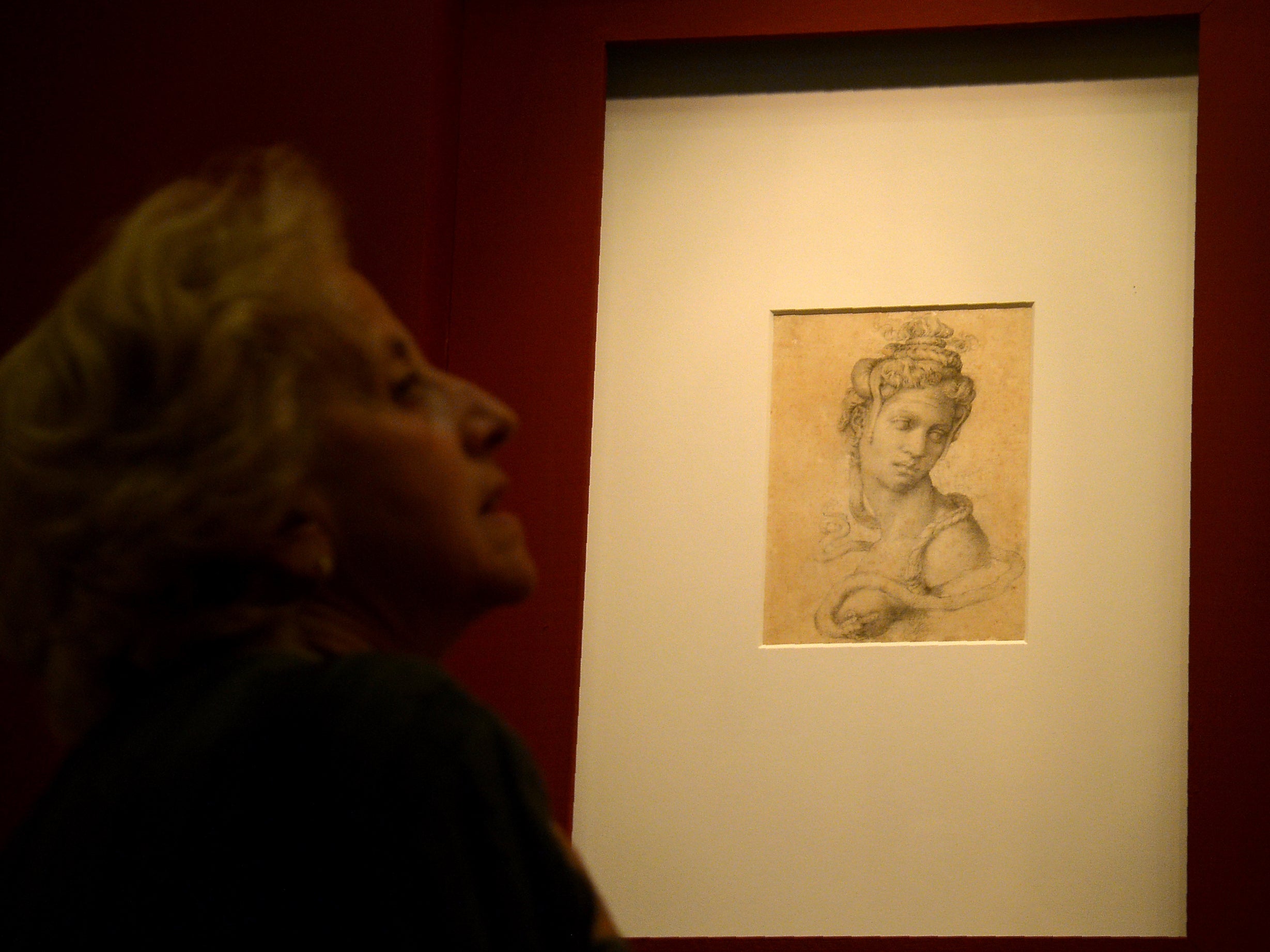
What the great-nephew mutilated was, in its original form, an extraordinary outpouring of passionate conceits, often complex, muscular, allusive; rarely polished. It is notoriously tricky to translate, but I’ve done my best to capture the rhythm, the rhyme scheme and the style of the original.
If one chaste love, if one great sympathy,
If one fortune governs two lovers,
If one’s harsh lot lays low the other’s,
If one spirit, one wish two hearts oversee;
If one soul in two bodies ever-lasts,
Raising both to heaven on equal wing;
If love’s golden bow on a single string
Burns and churns the heart of two hearts;
If one loves the other and neither himself,
With one taste and one delight, then one shot
Is recompense enough for each fond heart:
If thousands upon thousands such, their wealth
A hundred times falls short of such a knot;
And only scorn can rip it all apart.
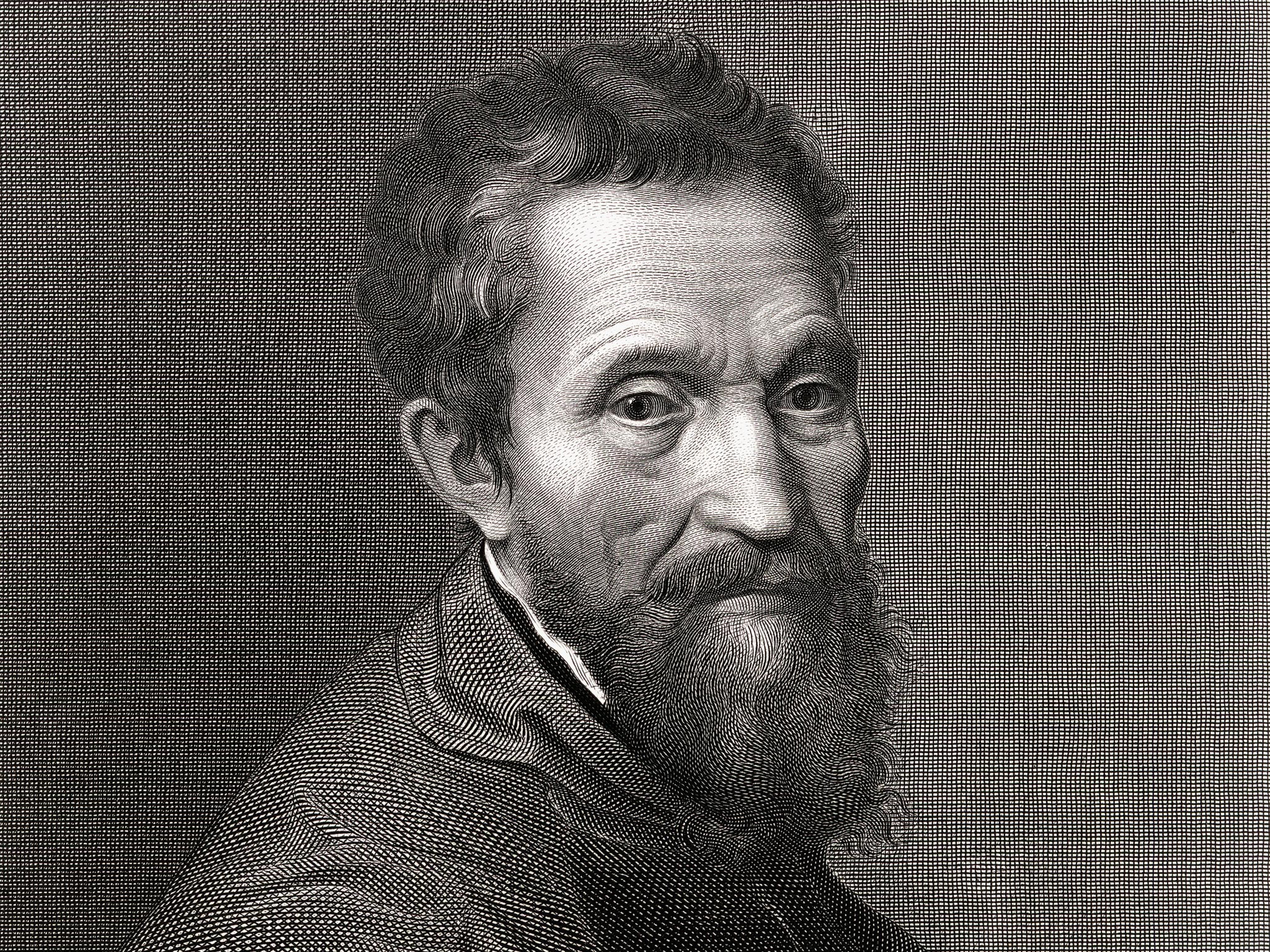
Michelangelo and Tommaso met in Rome in the early autumn of 1532 and, strolling through the heat beneath umbrella pines on the Esquiline, they had talked endlessly of art and beauty, not noticing how the sun had set or, later, how the snow-chilled wine placed before them, perhaps, left pools of moisture on the table. For a few weeks Tommaso’s exceptional profile was always beside him, and he, the slim, wiry, animated man with a crooked nose who didn’t think himself worthy despite his immense fame and titanic talent was falling deeply in love.
Michelangelo’s work took him back to Florence all too soon, from where he wrote lonely letters and began to probe his feelings in poetry, feelings which tell of Cavalieri’s absence as a matter of anguish and their longed-for reunion a deep reservoir of existential peace:
Are those dear days I spent with my sweet lord
forbidden me, while he pays heed to lies?
And he’s a liar, in truth, who contradicts it.
A little later they meet when Michelangelo is back in Rome and he is even less sure of Cavalieri: “Why this hesitation to greet one another, even now?'’ Within a few weeks, however, the young man wrote as clear a declaration of love as anyone could ask for: “I swear to return your love. Never have I loved a man more than I love you, never have I wished for a friendship more than I wish for yours.” Michelangelo had nothing to worry about.
When they met Michelangelo was 57, Cavalieri 23. The great Buonarroti was utterly smitten by the young man’s beauty, penning some of the most profound and passionate verse in any language.
Oh happy day, as surely truth will shine!
When time and all the hours are standing still,
and the day and the Sun in its ancient race;
so I may take, and through no merit of mine,
of my sweet, long-desired lord my fill
always in my unworthy arms’ embrace.
This is a plea for intimacy which goes beyond the traditional tropes of love poetry, that two men might share a love not unworthy of the greatest lovers. And these are the first major love poems to be written by one man about another since Antiquity, and the very first to wear contemporary clothes and not to dress up real desire in the smocks of shepherd swains or the oiled bodies of Greek warriors. They predate William Shakespeare’s sonnets to the ‘Golden Youth’ by some sixty years.
This is a plea for intimacy which goes beyond the traditional tropes of love poetry, that two men might share a love not unworthy of the greatest lovers
Michelangelo writes in the margins of letters, on the backs of drawings or over architectural designs; poems are scribbled hastily in his workshop, covered in marble dust, dripping with sweat, his chisel-rough hand struggling to keep up with inspiration; some worked up to a fine copy were sent to Cavalieri in Rome from Florence, perhaps in dread of a response, a rejection, cool ridicule or youthful indifference.
I do not know if it’s the yearned for light
of the one who first made it my soul feels,
or if some other love I once knew peels
back memory to shine within me bright;
or if fame or if the shadows of sleep
before my eyes or in my heart lace
me with I know not what burning trace
which is, perhaps, what forces me to weep.
What I feel, and what I seek, and he who
guides me is not with me; nor can I see
where he has gone, and I must look askance,
this, lord, has been my lot since seeing you,
a bitter sweetness, a yes and no move me:
and my fate lies, for sure, within your glance.
There is no reticence here, no hiding behind convention. This is the real thing and shows that Michelangelo had no concerns about his passionate love for another man or how the society of the time might view it. He had grown up surrounded by gay "uncles” in the Medici household. For him, it was natural.
His contemporaries, it seems, were just as accepting of such a passionate love between two men. For Tommaso, Michelangelo also made drawings of tormented or ecstatic lovers: the lustful Tityus tortured by a vulture poised exquisitely to rip at his liver; the beautiful Trojan shepherd Ganymede rapt to Olympus by Jove’s amorous eagle; Phaeton, the son of Apollo, tumbling to earth from the chariot of the Sun having rashly sought to guide his father’s horses.
This litany of overreaching, impeaching love, and drawings of beautiful young men became famous and coveted almost as they came into Tommaso’s hands. “Perhaps it’s been three days since I had my Phaeton, so well made,” Cavalieri wrote to Michelangelo in thanks, and the Pope, and Cardinal de’ Medici and everyone has seen it. I don’t know why they so desired to see it. Cardinal de’ Medici wanted to see all your drawings and they so pleased him he wanted to have the Tityus and the Ganymede made in crystal.”
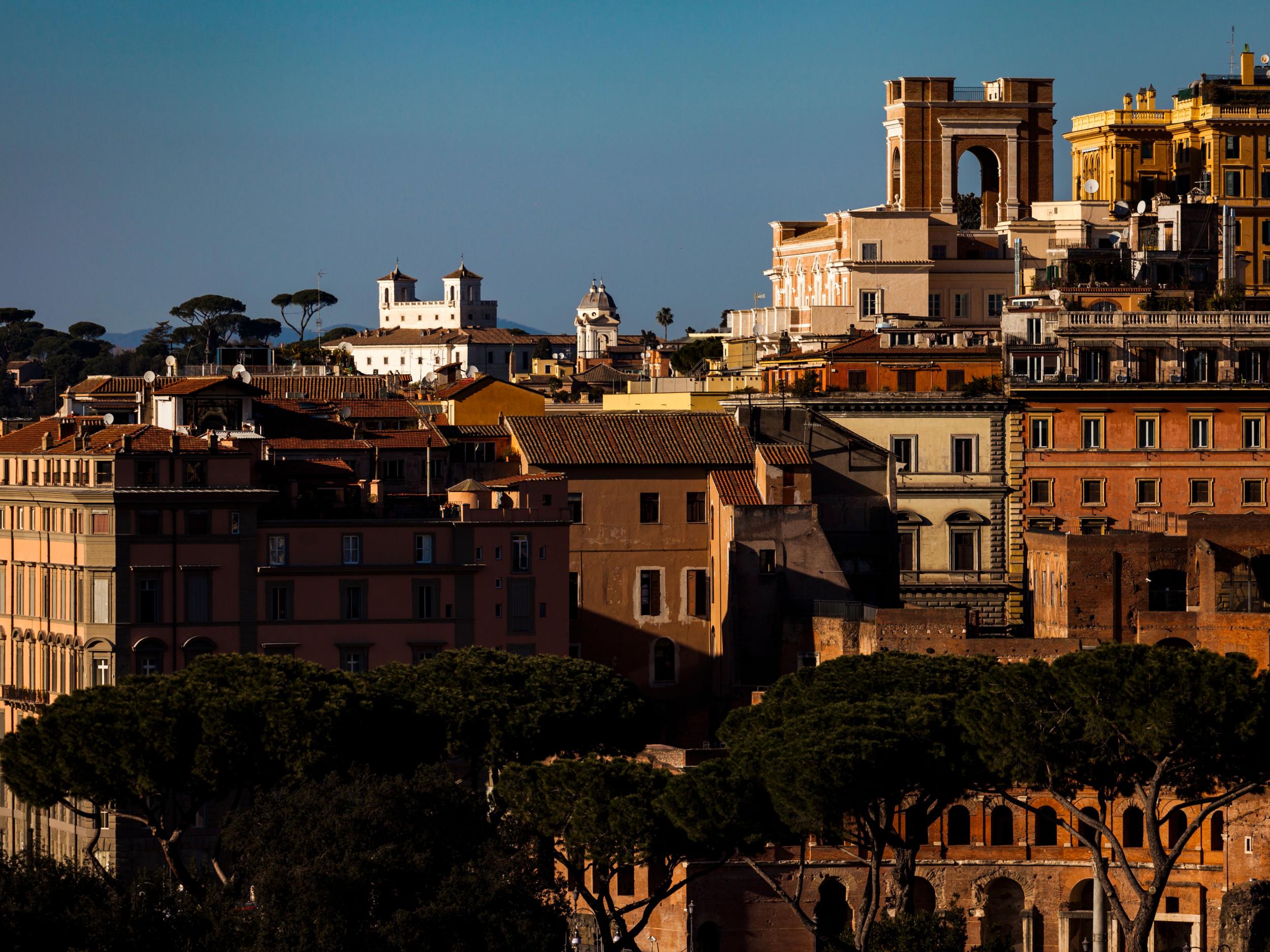
Cavalieri was not the first young man for whom Michelangelo wrote poetry or made drawings, nor would he be the last. But for the rest of Michelangelo’s long life, Tommaso remained his life-long love, muse, occasional model, go-between for the artist and his patrons and, lastly, standing vigil over the 89-year-old Michelangelo’s death bed. Twenty-three years later, Tommaso would die a well-respected member of Rome’s aristocratic and artistic communities. And he would be forgotten.
When their love was still in its first glorious madness, Michelangelo wrote: “I know I am as likely to forget your name as the food by which I live”, adding, "in fact I could forget the food on which I live, which sustains only my body, while your name sustains both body and soul, filling the one up with the other with such sweetness, I feel neither weariness nor the fear of death, while memory still serves me.”
300
The number of poems Michelangelo is throught to have written
How prophetic is that last phrase, "while memory still serves me”? He would not forget Tommaso, but the world would. In 1623, long after Michelangelo and Tommaso were dead, the artist’s great-nephew published a volume of his verse. Michelangelo the younger is the villain of this story. An accomplished poet himself, he wrote plays and entertainments for the Florentine court risqué enough to land him in hot water with the Grand Ducal family.
In choosing to publish his great-uncle’s poems, he was faced with a dilemma: print them as they were with all their passionate avowals of same-sex love and risk further censure, or edit them into heterosexual oblivion? Many of these poems had circulated amongst friends in manuscript before this, but they were little enough known by the early 1600s for the great-nephew to get away with a thorough rewrite.
Michelangelo Junior selected what he considered the best from the manuscripts, ‘polished’ them, or ‘reduced’ them in his own expression, to read like the slickly constructed, elegant compositions in fashion at the time, and launched them into the world. What was read of Michelangelo’s verses for over two hundred years was in the great-nephew’s bowdlerised edition. Whole sections were rewritten to conform to contemporary taste; the smoothing out of diction and syntax obliterated Michelangelo senior’s often far more mesmerising first thoughts and unravelled the tight, spare conceits which are the great novelty of style in his work.
So far so bad, but the great-nephew didn’t stop at that. Most tellingly, he changed the pronouns and rewrote many lines to imply that the object of his great-uncle’s poetry had always been a woman, not a man. For example, the sonnet partially quoted above, ‘S nel volto per gli occhi il cor si vede’ was clipped of its ‘signor mie caro’ and ‘mie dolce signore’, a carefully constructed conceit on the part of Michelangelo senior, to disguise the true identity of the master’s lover.
The great-nephew went further, completely rewriting whole poems or sections of sonnets to evade any whiff of same-sex desire. In one sonnet, Michelangelo’s almost breathless and rhythmically unstoppable series of propositions describing a man in thrall to carnal desire, ‘it is no great marvel, in a flash / to burn in the first fire one stumbles on’, ends in this printed edition with a few weak lines on the restorative effects of a ‘humble’ and distinctly female beauty, contrasting radically with the original manuscript’s defiant revelling in the carnal nature of the poet’s love for a man.
Everything was given a heterosexual gloss, the great-nephew bothered by the change of mood between the permissive rule of the Medici in the early 1530s and that of the Inquisition nearly 100 years later. The Counter-Reformation backlash against all things unorthodox, including sexuality, was in full swing by the 1620s. It had begun before Michelangelo the elder’s death with calls to censor the nudity in one of his greatest artworks, the Last Judgement fresco in the Sistine Chapel, leading to the overpainting with the infamous ‘breeches’ that remain today.
Rome had seen its fair share of gay scandals involving cardinals and grooms, and it’s no coincidence that the volume was dedicated to Michelangelo the younger’s new patron, Maffeo Barberini, recently elected Pope Urban VIII on a reforming ticket and soon to be the judge and jury of Galileo. It would have been politic to erase any scent of gay passion in his great forbear’s poetry.
And so it went on. What was known of Michelangelo the poet was known through this book. Because of a friendship with the poet Vittoria Colonna, a widow who became something of a spiritual adviser to him late in life, by the first half of the 1800s, a heterosexual, though chaste, Michelangelo had been concocted by critics and biographers. That ‘straight Michelangelo’ has persisted tenaciously ever since. Some art historians even today insist that, if he were gay (and to many it’s still a big ‘if’), Michelangelo the Elder must have been celibate, as if a sensual artist cannot really have a sexual life unless it’s a heterosexual one.
Michelangelo wasn’t the only poet to suffer a strategic rewriting of his work. William Shakespeare’s most famous sonnets to the ‘Golden Youth’ were stripped of their gayness by the editor of an edition published in 1640, the sexual puns purged, the pronouns swapped to conform to a new puritanical mood on the eve of the English Civil War.
Earlier editions of Shakespeare’s sonnets could be used to bring the young man back, but the result of the great-nephew’s editing of Michelangelo’s poetry was that Michelangelo’s whole life was rewritten, the truth buried in archives no one was going to visit. Tommaso de’ Cavalieri was airbrushed out of his romantic story. The drawings he made were explained away as poetical, Platonic confections, not real-time manifestations of Michelangelo’s erotic state of mind. And the Michelangelo of Irving Stone’s preposterous novel, The Agony and the Ecstasy, had already emerged from all this heterosexualising narrative tangle. Cavalieri was just a footnote in some biographical histories.
In the second edition of his Life of Michelangelo published in 1568, the artist and biographer, Giorgio Vasari, tells us of a life-size drawn portrait Michelangelo made of Cavalieri. A copy of this edition has survived, annotated in the early 1600s with an account of this portrait. The writer describes Tommaso as wearing antique-style armour, perhaps a reference to a line in one of Michelangelo’s poems where he puns on Tommaso’s name, claiming to be captive to "un cavalier armato”.
Even then, however, a little less than 20 years after his death, the annotator could only refer to Tommaso by reference to his now more famous composer son, Emilio. If only we still had it as a kind of visual counterpart to the poems but, despite attempts to identify it, this portrait has disappeared, just as Michelangelo the younger would ensure Cavalieri himself was erased from the memories of generations.
Around 1850 or so an intrepid antiquarian named Cesare Guasti began to dig around in the Vatican archives and Casa Buonarroti in Florence and discovered manuscript versions of the poetry, over 300 pieces, which told a very different story. He published them, unredacted, unexpurgated, in 1863. The revelation, for those looking for it, was complete. All those drawings of taut abdomens and peachy buttocks, the dancing boys on the Sistine Chapel Ceiling and the naked warriors of his unfinished battle mural, the insistence on such pheromonal male nudity suddenly made sense. Here was a Michelangelo drunk on male beauty, burning, raging against the "fiery boy who has made a rag tag of this tattered skin’', at times revelling in the power such beauty had over him.
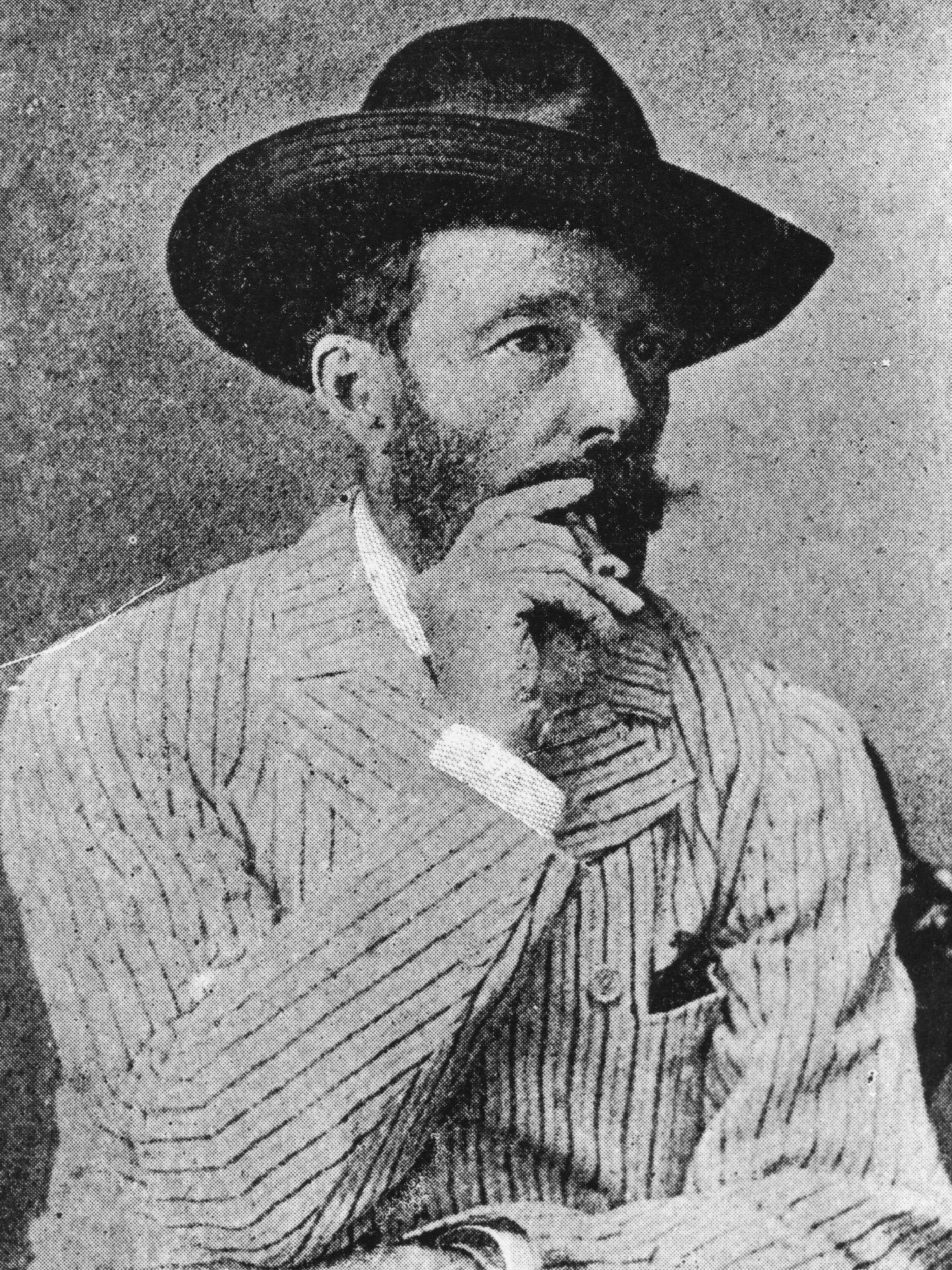
Towards the end of the 19th century, despite the moral hysteria about gay men which eventually led to the introduction of the offence of gross indecency in Britain, or perhaps because of it, a few brave souls began the process of peeling back the lies and textual ‘reductions’ of Michelangelo’s great-nephew to reveal the real artist. At the same time any old 16th-century full-frontal or alluring back view drawing of a male nude would be slipped, without comment other than an attribution to Michelangelo, between the pages of art magazines for those in the know to appreciate.
Critics such as Walter Pater and poets like John Addington Symonds began the process of establishing Michelangelo as a gay icon just as the very notion of same-sex desire as a natural variant of human (and animal) sexuality was beginning to be formulated. Symonds published the first English translation of the poems with all their visceral sexual authenticity and tension restored and, by and large, using the correct pronouns:
Because in thee I love, O my loved lord,
What thou best lovest, be not therefore stern:
Souls burn for souls, spirits to spirits cry!
I seek the splendour in thy fair face stored;
Yet living man that beauty scarce can learn,
And he who fain would find it, first must die.
Pater was more reticent, delicate you might say given his potentially wider readership, in his discussion of The Poetry of Michelangelo, published in 1873 in his collection of essays, Studies in the History of the Renaissance, but his understanding of the real nature of Michelangelo’s passions ran so much deeper:
Beneath the Platonic calm of the sonnets there is latent a deep delight in carnal form and colour. There, and still more in the madrigals, he often falls into the language of less tranquil affections... He who spoke so decisively of the supremacy in the imaginative world of the unveiled human form had not been always a mere Platonic lover.
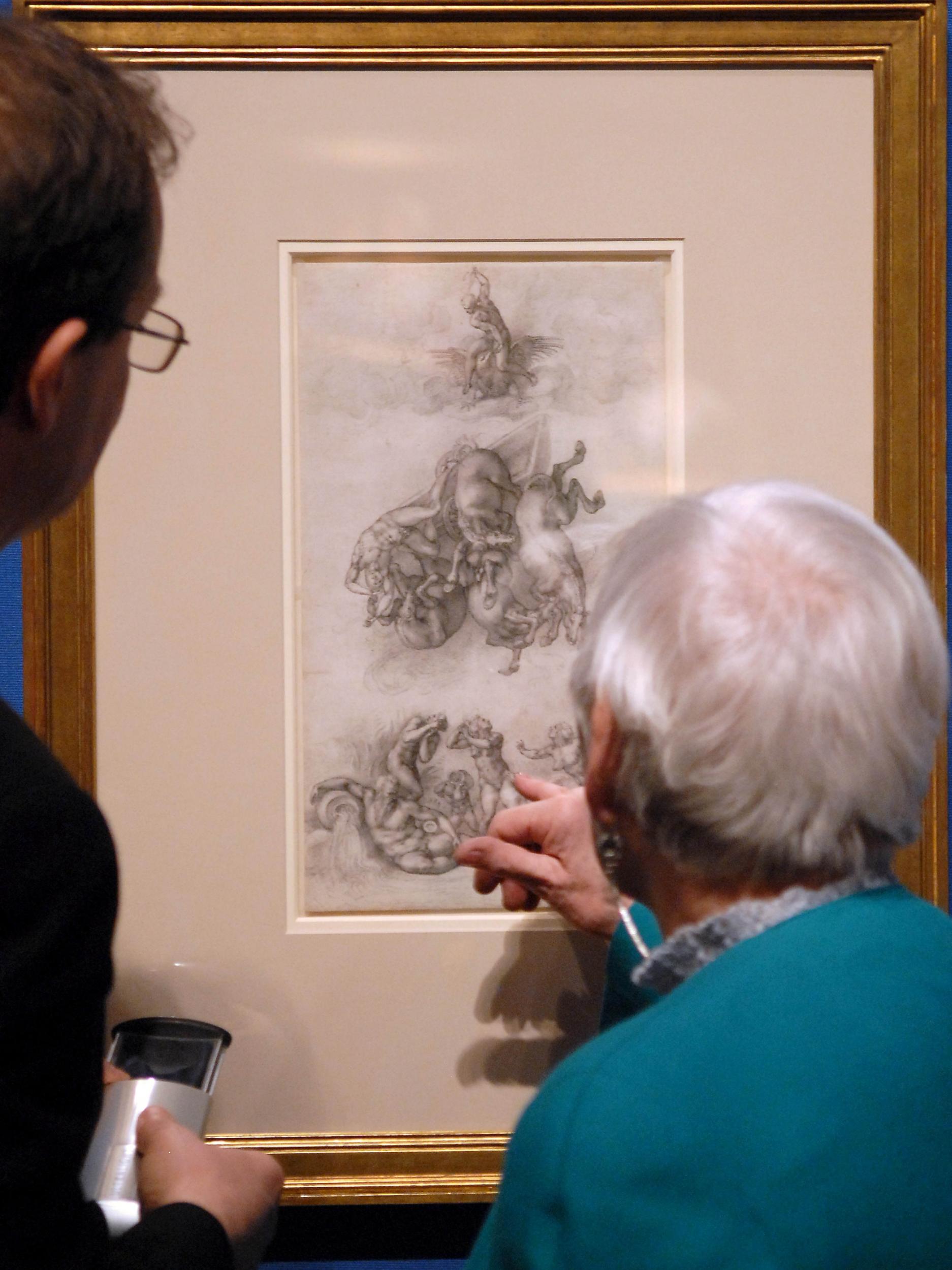
So a true history of Michelangelo’s began to be written, one which reacquainted the world with the unveiled form of the beautiful Tommaso de’ Cavalieri, and a new appreciation of the first true gay love poetry of the modern age was made possible. These were the sonnets referred to by Oscar Wilde in his defence of ‘the love that dare not speak its name’ during his trials in 1895, effectively outing Michelangelo to the Victorian public:
"The love that dare not speak its name” in this century is such a great affection of an elder for a younger man as there was between David and Jonathan, such as Plato made the very basis of his philosophy, and such as you find in the sonnets of Michelangelo and Shakespeare. It is that deep spiritual affection that is as pure as it is perfect. It dictates and pervades great works of art, like those of Shakespeare and Michelangelo…
It is that deep spiritual affection that is as pure as it is perfect. It dictates and pervades great works of art, like those of Shakespeare and Michelangelo…
In the next century they were set to music by Benjamin Britten and Dmitri Shostakovich, and became the subject of speculative psychoanalysis and Oedipal ruminations. They are notoriously difficult to translate at times and no such adaptation can capture the syncopated, sing-song rhythm of the Italian, particularly in a language as consonant-bound as English.
This renewed interest in Michelangelo led to other studies of other forgotten poets, and patterns emerged which helped place the sonnets and madrigals for Cavalieri in a context of Renaissance same-sex love poetry, a context no one, prior to 1900 had dreamed of. Angelo Poliziano, who had been Michelangelo’s tutor back in Florence, was the first to write of his love for another man in explicit terms:
When I think, my love, that the day is near
Which must take me as if I had sinned,
And sighs are all that’s left me here,
Where we so lately sweetly twinned,
And the hope-for good I thought sincere
Like dust is carried on the wind,
With envy my heart’s high blood strains,
That I must leave and my sweet lord remains.
It was such verse, though in a rougher, tougher form, which convinced Michelangelo that love between two men could be his subject. Another of Michelangelo’s contemporaries, Francesco Berni, famously berated his fellow poets’ lack of depth compared with Michelangelo, stating ‘Ei dice cose et voi dite parole’ or ‘He says things and you say words.’ What those ‘things’ were emerges, half formed like the carved flesh of an unfinished marble figure, struggling, reticent, passionate. For centuries those images had been finished off by another hand, but now the original appears.
If only we knew what Tommaso looked like, perhaps his image would be as prevalent today as James Dean or Olly Alexander. Perhaps he’d be as familiar as that sweet Greek boy, Antinous, who had been the lover of the Roman Emperor Hadrian. There are hints in some of Michelangelo’s sculpture from the time, the young virile Victory perhaps, and maybe one or two of the figures in the Last Judgement in the Sistine Chapel bear Tommaso’s image. He could be the new face of Pride. In the end, isn’t that what Pride is all about? Bringing back to life those stories which conventional history has consigned to unconsciousness. Being proud of our history.
During his last illness Tommaso was always by Michelangelo’s side, offering the smallest, humblest service, patient with his irascible friend who wanted to go out riding when he could scarcely stand. He read to him in the last hours and finally cradled him as he died. It was he who applied the seals to the box of Michelangelo’s assets and who waited in the empty house for the artist’s nephew, Lionardo, to come from Florence. The image is so redolent of other death-bed scenes from which those the dying man loved were excluded or erased, if only time could go back and all those forgotten lovers be restored. At least modern scholarship has returned Tommaso to his place by Michelangelo’s side. He was proud to have been his lover.
Any old 16th-century full-frontal or alluring back view drawing of a male nude would be slipped, without comment other than an attribution to Michelangelo, between the pages of art magazines for those in the know to appreciate
Words shift. Pride, which was once a young man’s scowl in a early poem by Michelangelo, is now our badge of honour. Words swell in meaning and become symbols of something far grander. What seems a small, peevish thing can grow into an idea even the greatest master of language can’t control. When Sassoon scribbled that short poem back in 1925, he couldn’t have known it would speak so loudly to us now. Words conceal while at the same time revealing the true nature of love. They linger on the threshold of meaning, half hidden by the dark, trembling to be understood, before finally blazing glory across a newly enlightened universe.
Lastly, all those whose words erased or rewritten for the sake of a conformist history of the world are slowly coming back to us. We are proud of them. We march for them as much as for us and those who will come after us. They are our words, and no one will take them from us again. We may encounter storms and troubles on the way, and those who would like to erase us are as busy as ever, but we go on in Pride.

In one of his letters to Cavalieri, Michelangelo tried to explore what falling in love meant through an extended metaphor which neatly sums up this process of small beginnings leading to something overwhelming, sensual, almost impossible:
“Ill-advisedly, Messer Tommaso, my dearest lord, I was drawn to write to your lordship, not to reply from any letter from you, but moving first, as I saw it, to cross a little stream dry-shod, or what seemed from its shallow water a ford. But after I left the bank, I found myself not in a little stream but in the ocean, with waves towering over me, so much so that, had I been able, I would have returned to the bank from which I came, to avoid being overwhelmed. But since I’ve made it so far, I’ll take heart and go on.”
Quotation from Siegfried Sassoon is copyright Siegfried Sassoon and reproduced by kind permission of the estate of George Sassoon
Join our commenting forum
Join thought-provoking conversations, follow other Independent readers and see their replies
Comments
Bookmark popover
Removed from bookmarks